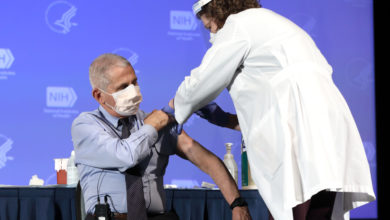Revealing the Big Secret

The boys hadn’t really been asking about sex, but sometimes it would come up indirectly.
For example, “sexy” is a banned word at D’s school, and during his kindergarten year, he asked me what it meant. “Ummm… It means you’re so good looking that someone wants to kiss you.” My response didn’t fully answer the question, but it was close enough for his purposes, so he didn’t really ask the natural follow-up of what “sex” itself is.
There was also the time a couple years ago when I was having a really bad sneezing fit due to Spring tree pollen, and one of the boys asked me what was wrong. Perhaps my response of “Trees are trying to make babies with my face” wasn’t my best moment for enshrinement in the Parenting Hall of Fame, but then we talked a little about the sex life of plants. They didn’t really transfer it to people.
There have been a couple of times recently when D and M have both asked “What is sex?” when we weren’t in a position to give a good answer (with a group, etc.), so we had had to brush them off with “we’ll talk about it later.” And, of course, there have been a few times in which a more sophisticated and observant person would have realized that it was a bad time to have burst into Mommy and Daddy’s room…
So, the topic has come up, but never so directly that we had to address it. We could have tried to avoid talking about it, but comprehensive sex education at the boys’ ages (5 and 7) means that they should be able to (among other things):
- Use proper names for body parts, including male and female anatomy.
- Explain that all people, including children, have the right to tell others not to touch their body when they do not want to be touched.
- Explain that all living things reproduce.
As much as it might have been more comfortable for us to avoid the topic with them, it seems that it is time to have The Talk. J’s sister has a book in her library that she lent us for the purpose, What’s the Big Secret?: Talking about Sex with Girls and Boys. J and I reviewed it, and we decided that it was a good way to start talking about sex with the boys. We decided to introduce it as a bedtime reading book for Daddy, so when I finished the umpteenth reading of The Jumbo Book of Space, it was time.
What’s the Big Secret? is divided into five sections, and I read the first two (and longer) on the first night: “How Do Boys and Girls Differ?” and “More About Girls’ and Boys’ Bodies”. These sections were mostly easy to read, with only a little discomfort for the parent. The book starts with the acknowledgements not only that boys and girls often have different hair, clothes, types of play, etc., but also that these lines are not strict – some girls play with “boy” toys, and some boys show emotions traditionally associated with girls. It transitions into saying that the real difference between boys and girls is that they have different body parts. There are cartoon drawings of boys and girls that point out that most of the body parts are the same (arm, hand, leg, etc.), but that some are different (penis and scrotum vs. vulva and vagina).
This was the first part of the book to give me a twinge of discomfort; even when being read with love, care, and the best intentions, there’s something unusual about showing children drawings of naked bodies and pointing out the names of the parts. Yes, this is one of the levels of healthy education that a child of that age needs, but it still feels odd.
After that, the book discusses talking about sex (which led to a fun tangent from both boys on words that are considered dirty at school), the need to respect others’ privacy even when there is curiosity about each others’ bodies, and touching. For touching, it covers not only how good “good touch” can be (the importance of wanted hugs, and the pleasure of private self-touch – yes, it mentions “masturbation” by name), but also how everyone has the right not to be touched. As far as I know, my children have never had problems with “bad touch,” but this book helps reinforce the lesson that they need to tell us if something happens.
That was enough for the first night.
The second night, we got into the third section, “Why Boys and Girls Differ: A Little Lesson in Reproduction.” After pointing out that all living things reproduce (kittens and puppies, etc.), they come to this point: “The sexual parts of girls and boys are made differently so that when they grow up they are able to create babies and become parents.”
So, yeah. This just got real.
Next, cartoon drawings of male and female adult genitalia show where sperm and eggs come from, and where they meet in the Mommy’s body after “a man and woman fit his penis into her vagina.” This was probably the most uncomfortable part of the book for the boys, because when D asked “When do they do that?” he really didn’t seem to like the answer “when the kids are in bed.” I think they didn’t like looking at that page with Daddy while realizing that Mommy and Daddy do this, but they will probably come back to it on their own later.
Finally, the book ends with “Having a Birth Day (or Belly Button Day)!”, a chapter on pregnancy, birth, and belly buttons, and “What Now?”, which gives a short preview of puberty (without mentioning details like menstruation, which is generally fine for us since we have only boys). We really hadn’t had a lot of questions along those lines from our kids, but it’s good to give them basic understanding of what happens for when they actually get curious. Amusingly, they seemed doubtful about the news that the baby gets pushed through a vagina – isn’t that too small? I told them that it is small, but it stretches, which hurts a lot. They didn’t seem to think this was a great idea.
After I finished the book, I asked the boys if they had questions, but they really didn’t. D, though, seems very interested in taking time on his own to read the book, and I think he’s going to spend some time really thinking about it. We hope that they’ll be comfortable with questions as they come up in the future.
I’m glad that my sister-in-law had What’s the Big Secret? for us to borrow, but it’s not a perfect book. It had an odd page that lists a bunch of excuses that parents give not to talk about sex – it confused our kids because they haven’t really heard most of those excuses from us, and I didn’t really get anything from it.
A bigger concern with the book is that it is completely heteronormative: there is no discussion of any sexual activity or desire other than straight sex, and the definition of “boy” and “girl” is totally based on genitalia, which isn’t true for trans individuals. I have an old edition of the book – perhaps acknowledgement of LGBT identity will come later, but perhaps that’s not realistic to expect in a book aimed at small children in our society. After all, I don’t know that I want to emulate Julia Sweeney’s experience by seeing my children independently inventing anal sex before age ten.
Overall, there were some awkward moments reading through the book with the boys, but I’m glad to have done it. There’s so much about sex, sexuality, dating, and relationships that we will have to help our kids understand in the future. They’re not ready to have all of those conversations now, but I think we set the foundation.
Featured Image credit: “The Holy Infants” by Leonardo da Vinci (public domain)






I had to explain all the biology to Mountain after he demanded to know where he came from. Then I had to explain all the sociology after he made jokes about a TV character exposing himself to others. But that stuff’s easy. You know what’s difficult? Answering “why”. “Why did you have a kid?” I didn’t realize that “because I like you a lot” wouldn’t be a sufficient answer. He demands to know why individuals are justified to come into existence without having been asked permission first, and he’s only 7! I’m in for a hell of a ride…
It sounds like Mountain’s going to be a handful! Good luck!
Does any one have any non-hetero-normative recommendations?
This does sound like a pretty good book. I think the slight pangs of discomfort are pretty normal because a lot of us are still trying to over come guilt that we were taught as children. We never received a good example of how a healthy, sex-positive adult talked to children.
Part of the discomfort for me was the recognition that teaching information like that is something that culture says that predators do. I wasn’t trying to lure Arnold Drummond into a back room with gladiator movies, but the cultural programming resonated.
I asked some friends involved in sex positivity if they know about other books that would be better. I’ll let you know if I heard of anything.
Here’s a queer review of sex ed books that someone posted on a friend’s FB wall: http://www.bilerico.com/2009/10/the_lazy_queer_parents_guide_to_sex_ed_books_for_k.php/
It mentions “What’s the Big Secret” as better than most, but not good enough for the author’s queer family. She suggests some alternatives, though she says she never found a perfect book.
“What makes a baby” by Cory Silverberg is a relatively recent book (aimed at 3-7 year-olds?).
There’s also a website with a free .pdf page by page guide for the grown up to help guide conversations.
The book is intended to work for all family types such as adoption, trans*, surrogacy, IVF, egg/sperm donation, homosexual, poly, heterosexual…
The reason is that the book focuses on a baby needing an egg, a sperm and a uterus to be made, but doesn’t assume which person in the child’s life (or not) provided which.
I recommend checking out the website and guide to get a good idea about the book to see if it appeals to you.
Thanks!
“which gives a short preview of puberty (without mentioning details like menstruation, which is generally fine for us since we have only boys).”
One request: Please make sure to teach your boys about what happens with girls during puberty too, and before puberty. Too many males don’t understand menstruation, and get weirded out by it and by talk about bras, and if we want to change that sort of thing we need to educate before society can.
That’s a very good point. I probably should have said something more like “…which is less directly relevant for us, but still important).” Sorry about that.
Thanks. I’m a little sensitive to this because I had the fortune to go through the Unitarian Universalist sexuality programs and so I’m pretty comfortable with discussing those issues with my wife if she wants to, while my sister who has Down Syndrome has internalized the taboo surrounding menstruation to the point where she can’t even refer to it directly, even by calling it her “period”, it is her “thing”. Also reading about the taboo around menstruation in India with the man who developed the sanitary pad machines for women there has given me a heightened awareness of how as men and parents of future men we can help reduce this stigma and taboo by talking matter of factly about it.
And that reaches what troubled me so much about the Julia Sweeney video. Her answers were mediocre, misleading, uninformative, and seemed likely to further the stigma surrounding sex and talking about sex. She may have thought that she was ready, but I just kept shuddering as she described leading the conversation into the weeds. I think what posters on this site are doing around this issue is far better than what she did, and appreciate the work and effort you are putting into it which will help me when I have this conversation with my future children in several years.
I don’t even know how the sex discussion is going to go with my stepson GT (he’s 11). First, there’s the problem that he’s so uncomfortable and weirded out by sex and romance that he actively avoids any hint of it. He missed a major plot point in Frozen because there was a threat of a kiss coming and he skipped ahead several minutes, even though it was in the least romantic situation possible.
Then there’s the fact that my husband considers it awkward and inappropriate for me to handle the more “delicate” tasks with GT. So, even though I do all of GT’s clothes shopping, I’m not allowed to buy him underwear. And I will not be allowed anywhere near the sex discussion. I would be okay with that if I had any confidence that my husband would handle it in an open way that didn’t entirely focus on heteronormativity.
I’m probably just going to have to casually let GT know that he can ask me anything and just leave it at that. I *really* want to make sure he understands consent thought, more than anything.
That’s a rough situation. Good luck with GT and your husband 🙁
Regarding consent, Laci Green (a youth sex education (and atheist)) posted a video yesterday about consent: https://www.youtube.com/watch?v=TD2EooMhqRI. Her videos are targeted at teens, so maybe it’d help if you can get GT to see it, but obviously that’ll be the initial hurdle.
I kind of want to have my kid sit out of health class in school and watch Laci Green videos instead…
Thanks! There was a post a few months ago on Skepchick or Teen Skepchick all about enthusiastic consent that will be great for when he’s older too. I’ll just have to “accidentally” leave it up on the family computer. 🙂 I might be doing a lot of that.